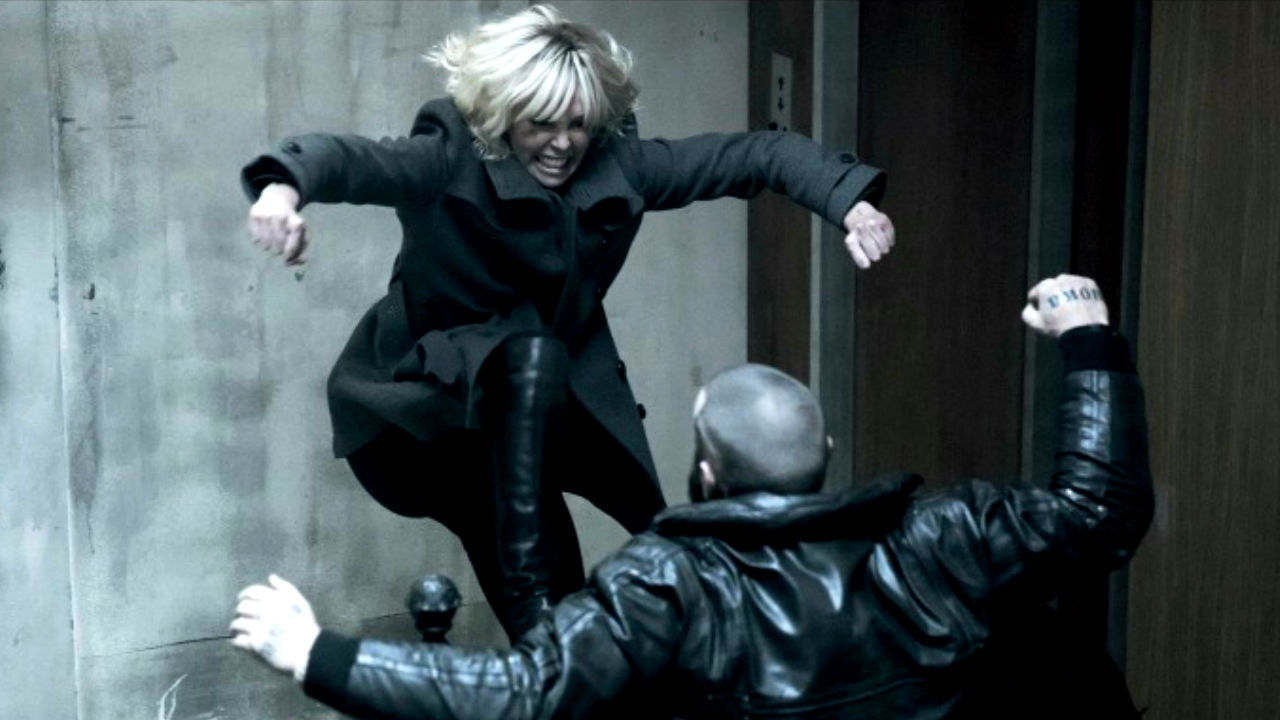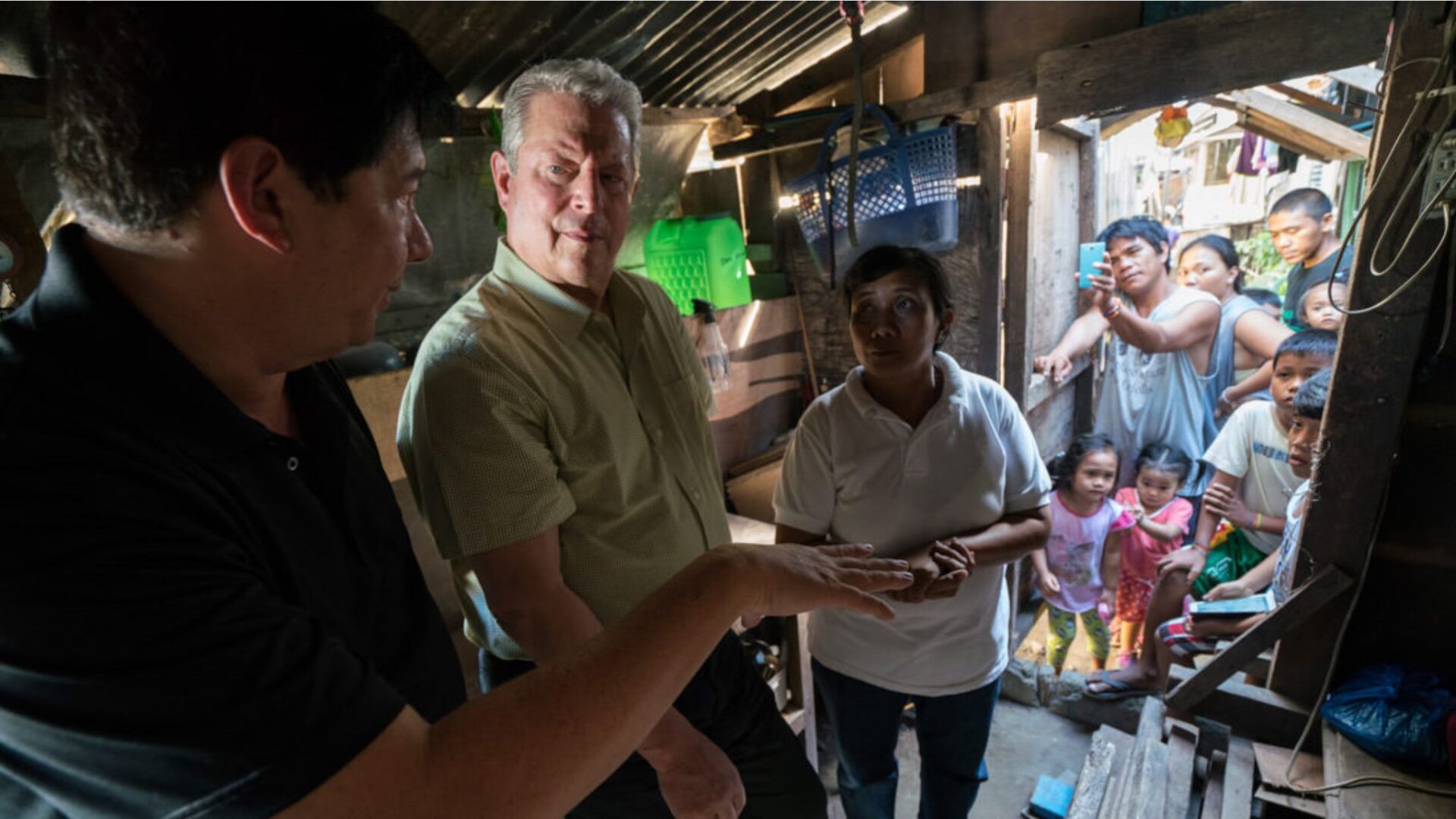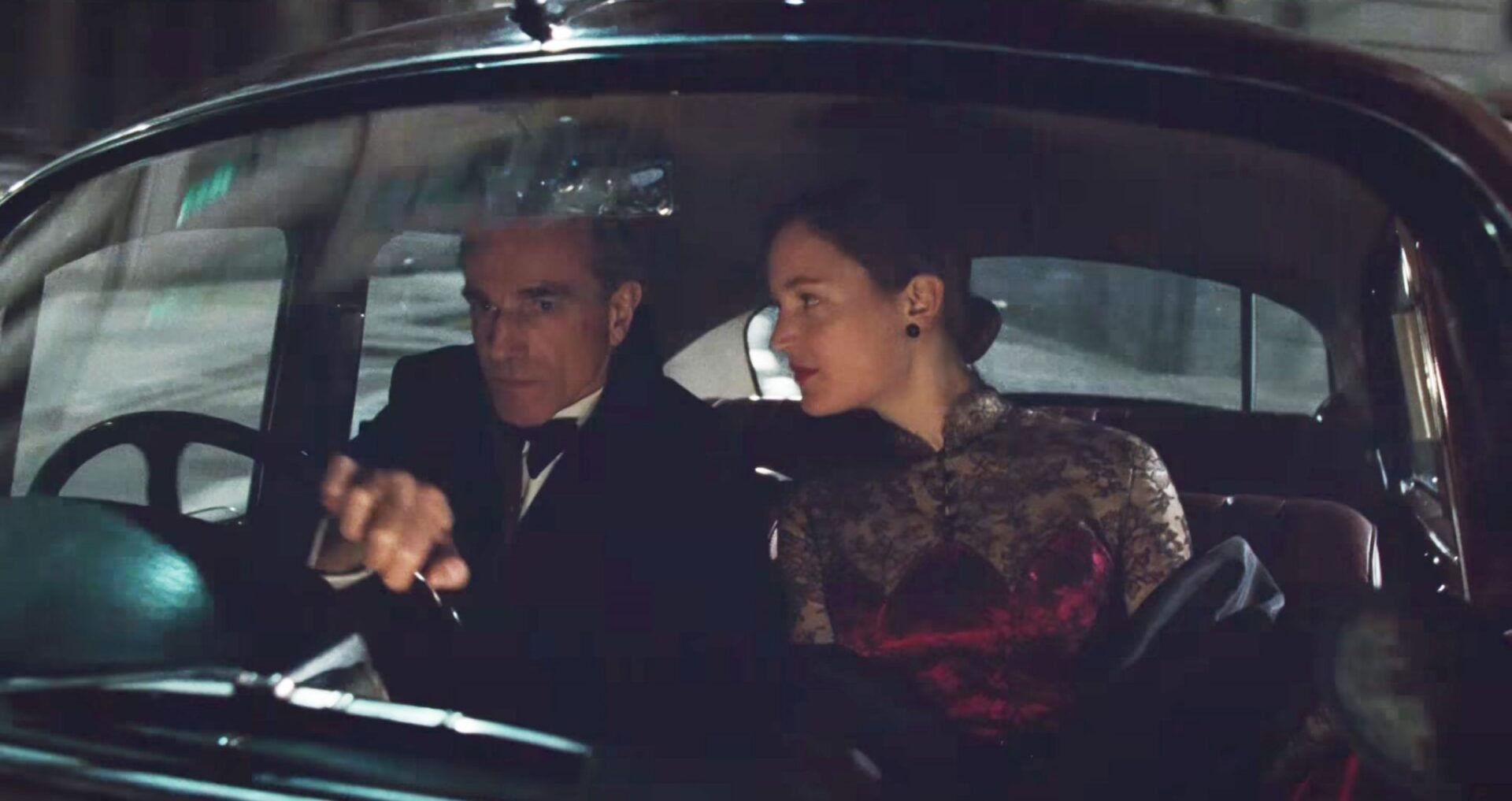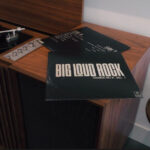After the breakout success of John Wick, it seemed inevitable that directors Chad Stahelski and David Leitch had built the foundation for highly lucrative directing careers. And yet, while Stahelski continued on with the world-building and mad choreography of John Wick: Chapter 2, Leitch branched off to his own project, Atomic Blonde, an adaptation of the graphic novel series The Coldest Day. The result is… messy, but it coasts along on enough cool neon-infused style to make up for some of the film’s textual weaknesses, even if those weaknesses prevent one from being as instantly immersed as one would be by Stahelski’s series.
During the final days of the Cold War, just as the Berlin Wall is about to come down, British agent Lorraine Broughton (Charlize Theron) is dispatched to Berlin to retrieve a secret list of active agents that, if in Soviet hands, could extend the Cold War for decades to come. Her sole contact on that side of the wall is the duplicitous agent David Percival (James McAvoy), whose trustworthiness is immediately questionable and makes Broughton’s job all the harder to execute as his own motives conflict with her mission.
To delve further into the plot, though, is an exercise in frustration and futility, as it boils down to a mess of convoluted nonsense. There are a number of subplots that don’t actually go anywhere, seemingly with the intent of adding dimension to Theron’s cooler-than-thou performance but failing miserably, and the consequence is that there are long scenes of supposed intrigue that neither further the plot nor get us to care for the protagonist on a personal level. Atomic Blonde is desperately trying to be a densely-plotted espionage thriller, but the plotting is messily assembled around what is ultimately a very simple narrative, and expository scenes feel like a waiting game between the action beats, even if you’re waiting in the company of a badass in a handsomely realized neon retro aesthetic that makes every frame of the late 80s Eastern European setting pop.
When the film does burst alive with action, though, the fights and choreography are on par with anything you would see in John Wick or even The Raid. Leitch does have an obnoxious penchant to pair his fights to the most obvious hits of the late 80s, and he never sticks to one particular genre to let the film fill an acoustic groove, but the fights themselves are gorgeously shot and often on-tempo for the musical choices, exhibiting a stark brutality in Theron’s movements and unafraid to let its female lead take a brutal thrashing even as she’s doling one out. One fight in particular is ten minutes long and presented as a single, continuous shot, and it’s sure to go down as a classic among hardcore action fans for the perfect synchronicity of the fight choreography and cinematography.
It’s such a shame then that Atomic Blonde feels like it delivers its action gems in such a lackluster package. It’s a film that hovers on the perpetual border between excitement and tedium, and it’s clear that story and plotting are not David Leitch’s directorial strong suits. Hopefully he can reunite with someone like Chad Stahelski on future projects, as he needs someone to punch up his ability to build intrigue around his stellar action beats, or at least a more coherent screenplay. For now, though, Atomic Blonde skates by on its moments of intensity; just don’t expect to be quite so titillated in the moments between the punches and gunfire.













